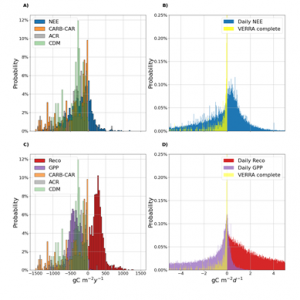Protocol exclusion of forest and soil carbon emissions to the atmosphere triggers over-crediting and an inferred annual error of ~256% creating a carbon bubble.
CAMBRIDGE, MA, UNITED STATES, February 7, 2022 /EINPresswire.com/ -- The problems with carbon offsets are widely acknowledged, but explanations and solutions are lacking. A new publication characterizes, for the first time, zero-threshold carbon accounting across five widely used carbon offset protocols that exclude forest and soil carbon emissions to the atmosphere in the calculation of net carbon. This unavoidably triggers over-crediting and an inferred annual median error of ~256%, skewing carbon results. The finding is explained in a publication prepared by Planetary Emissions Management Inc. (PEM), Cambridge, Mass., and can be accessed here.
“The international dialog around the problems with carbon offsets has raised awareness of the issues but lacks the explanatory link shared across protocols, that is, exclusion of embedded CO2 efflux, or debits, in reporting the net carbon offset balance,” remarked PEM CEO, Bruno D.V. Marino. “Forests and soils take up and release CO2 — without measurement of both natural processes, net carbon products may not be reliably determined for commerce — it is time to reset the carbon offset validation process, aligning green policy with science and commerce worldwide."
The protocols analyzed included publicly available data for the American Carbon Registry
Highlights of the study include the following:
• Commercial carbon protocol results are significantly different from directly measured global forest CO2 carbon data, inferring an annual median error of ∼247% (gC m−2), consistent with over-crediting.
• VERRA uses daily values to calculate carbon offsets in contrast to annual data reported for the CARB, CAR, ACR, and CDM protocols.
• Registry data summarized in the study indicates that VERRA holds 80% of the land, 50% of offsets, and 19% of revenue, with an average price of US$3 for the period surveyed. In contrast, CAR holds 7% of the land, 29% of offsets, and 74% of revenue, with an average compliance price of US$14.13 for the period surveyed.
• Project data for reducing emissions from deforestation and forest degradation (REDD+) projects were also included in the analysis.
• The ∼two-decade tally of potentially over-credited offsets is estimated at ∼USD $15.7 billion, emphasizing the urgent need for protocol alternatives to address offset verification for forest projects.
• Following from the zero-threshold accounting structure identified in the study, commercial protocols appear to lack the sensitivity to detect ecosystem-switching from net-carbon sinks to positive source values, rendering protocols likely incapable of addressing project reversals under climate change.
• The study reports that direct measurement of forest carbon sequestration offers the most stringent and primary test of additionality, such that each tCO2e traded is validated as “net-additional,” at the project level, in reducing the atmospheric burden of CO2.
• The study emphasizes that additional work is needed to improve carbon offset reliability, including cooperation between commercial protocols and forest carbon research methods cited in the publication.
• A unified approach to carbon offsets is proposed by adopting shared scientific methods similar to the process employed by the Montreal Protocol, a framework that would support the Paris Agreement.
• While the study focuses on forest carbon, the determination of net-carbon sequestration across industrial sectors requires a full accounting of greenhouse gas sources and sinks. For example, carbon farming, promoted by the USDA’s Growing Climate Solutions Act, depends on quantifying soil carbon dynamics, but methods and outcomes vary widely, lacking industry standardization.
• Carbon-denominated model algorithms and biometric measurements of trees employed for commercial protocols do not readily apply to CH4 and N2O emissions, requiring soil monitoring across the project area.
• A standardized approach is proposed to harmonize carbon offset markets, providing criteria for net-zero and carbon-neutral status and for environmental, social and governance (ESG) criteria metrics.
• The published results are based on an academic comparative analysis using publicly available data and are for research purposes only. Consult the publication for further details.
About Planetary Emissions Management Inc.: PEM Inc. is research and development company based in Cambridge, MA, creating an interface between science and commercial applications to manage climate change now and for future generations.


No comments:
Post a Comment